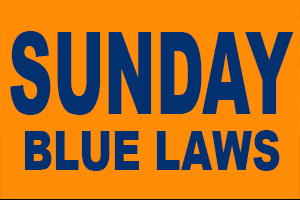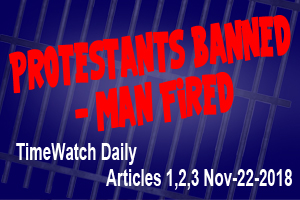
A Day To Remember
TimeWatch Editorial
November 01, 2016
teamed up to revise and update The Facts on Halloween. According to his website, Dr. John Ankerberg is founder and president of The John Ankerberg Show, the most-watched Christian worldview show in America. Author, co-author, or contributor of 158 books and study guides in 20 languages, his writings have sold more than 3 million copies and reach millions of readers each year online. He is a graduate of the University of Illinois—Chicago, and holds three advanced degrees, including a Master of Arts in Church History and Philosophy of Christian Thought and Master of Divinity (with honors) from Trinity Evangelical Divinity School, and a Doctor of Ministry degree from Luther Rice Seminary. John Weldon has authored and co-authored numerous books on cults and the occult, and has master’s degrees in divinity and Christian apologetics, and doctorates in comparative religion and contemporary movements. Dillon Burroughs is a best-selling author or co-author of more than thirty-eight books. Known for his collaborative writing efforts, his works range from editing The Apologetics Study Bible for Students to serving behind the scenes for some of today’s New York Times best-selling authors. He also serves as senior writer for The John Ankerberg Show.
These three men have delivered an explanation of the source of one of the most pervasive celebrations of our time. According to the Creative Resources Group website, Halloween has increased in popularity so much that it falls second to only Christmas in terms of total consumer retail spending. That certainly sounds about right, what with all the expensive, fancy costumes for adults and children, decorations, theme-parks, haunted activities, Halloween parties, and pets. After taking a look at the pagan origins of Halloween as dealt with in our last editorial on October 31, 2016 entitled “Hell-Oween,” we recognized that the celebration was taken into the church. The first chapter in the book “The Facts on Halloween”
“In A.D.835, Pope Gregory IV designated November 1 as All Saints’ Day, or All Hallows’ Day (the term hallow refers to saints). The night before November 1, October 31, was known as All Hallows’ Evening. How did we get the term Halloween? Look at the name “All Hallows’ Evening.” If we drop the word “all,” the “s” on Hallows’, and the “v” and “ing” on evening, the result spells Halloween. Long before the church gave this name to the evening before All Saints’ Day (a celebration in remembrance of saints and martyred saints), it had been celebrated in various ways in many places around the world. It is generally agreed by historians that Halloween came to take the place of a special day celebrated by the ancient Druids. The Druids were the educated or priestly class of the Celtic religion.” “The Facts on Halloween” page 6
The American Book of Days” compiled by Stephen G Christianson the following is found.
“Few holidays have a stranger or more paradoxical history than Halloween… it is the vigil of All Saints Day, observed by Roman Catholics…However, some of the customs traditional to Halloween hark back to matter that Christianity for centuries has adamantly opposed: black magic, fortune-telling, ghosts, witches, goblins, fairies, and so on….It is generally accepted that Halloween in its more popular or folk aspects represents a combination of druidic practices and classical Roman religious beliefs. Halloween has clear connections with the rites of the druidic priest in the pre-Roman, pre-Christian Celtic communities…especially in Ireland and Scotland.” Stephen G Christianson”, The American Book of Days 4th Edition 2000 p.741
approached the door of the Castle Church in Wittenberg, Germany, and nails a piece of paper to it containing the 95 revolutionary opinions that would begin the Protestant Reformation. luther2017.de website has posted the following.
“Reformation Day on October 31 will be a national holiday in all of Germany only in 2017. The heads of the state governments have agreed on this. On this day, Martin Luther will have posted his 95 Theses against the abuse of indulgences exactly 500 years ago. According to his secretary Georg Rörer, Luther sent his theses along with letters to ecclesiastical superiors and, according to his secretary Georg Rörer, posted them on the doors of Wittenberg’s churches as an invitation to debate them. His theses spread throughout the land like wildfire thanks to the printing press, which was already well established at that time.” The anniversary of the reformation in 2017, luther2017.de
The history.com website clearly defines the action taken by Martin Luther on that day. Under the heading, This Day in History, October 31 it says:
“In his theses, Luther condemned the excesses and corruption of the Roman Catholic Church, especially the papal practice of asking payment—called “indulgences”—for the forgiveness of sins. At the time, a Dominican priest named Johann Tetzel, commissioned by the Archbishop of Mainz and Pope Leo X, was in the midst of a major fundraising campaign in Germany to finance the renovation of St. Peter’s Basilica in Rome. Though Prince Frederick III the Wise had banned the sale of indulgences in Wittenberg, many church members traveled to purchase them. When they returned, they showed the pardons they had bought to Luther, claiming they no longer had to repent for their sins.Luther’s frustration with this practice led him to write the 95 Theses, which were quickly snapped up, translated from Latin into German and distributed widely. In 1521 Pope Leo X formally excommunicated Luther from the Catholic Church.” History.com, This Day in History, October 31
So the question must be, which will you celebrate? The choice is yours.
Cameron A. Bowen







